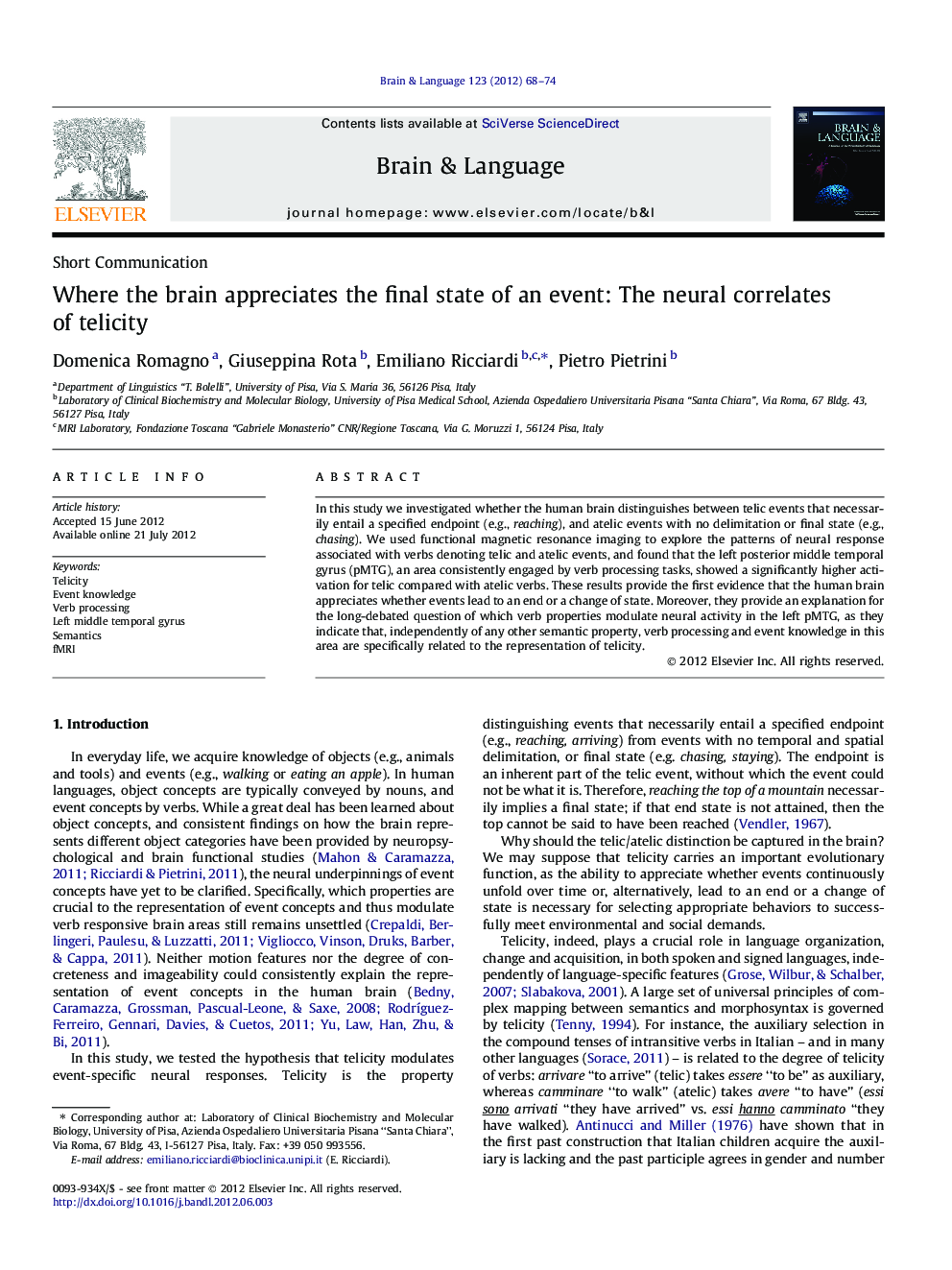| Article ID | Journal | Published Year | Pages | File Type |
|---|---|---|---|---|
| 925395 | Brain and Language | 2012 | 7 Pages |
In this study we investigated whether the human brain distinguishes between telic events that necessarily entail a specified endpoint (e.g., reaching), and atelic events with no delimitation or final state (e.g., chasing). We used functional magnetic resonance imaging to explore the patterns of neural response associated with verbs denoting telic and atelic events, and found that the left posterior middle temporal gyrus (pMTG), an area consistently engaged by verb processing tasks, showed a significantly higher activation for telic compared with atelic verbs. These results provide the first evidence that the human brain appreciates whether events lead to an end or a change of state. Moreover, they provide an explanation for the long-debated question of which verb properties modulate neural activity in the left pMTG, as they indicate that, independently of any other semantic property, verb processing and event knowledge in this area are specifically related to the representation of telicity.
Graphical abstractFigure optionsDownload full-size imageDownload high-quality image (85 K)Download as PowerPoint slideHighlights► We investigated the neural substrates of telic vs. atelic verb processing. ► The left posterior middle temporal gyrus is selectively modulated by telicity. ► The human brain appreciates whether events are telic (i.e., they lead to an end).
